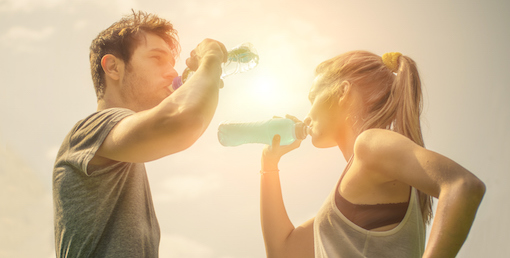Absopure
(un)Filtered

How To Detect Dehydration
Imagine yourself running on a hot summer day. You’re approaching your sixth mile and show no signs of stopping. Suddenly – seemingly out of nowhere – you collapse.
Dehydration is a lot like frostbite – by the time you realize its effect on your body, it’s often too late to prevent it.
Proper hydration planning is key to maintaining a healthy lifestyle, and failure to do so can result in adverse effects on your body, mood and energy. It’s important to know how to detect dehydration not just for your safety, but for others’ as well – especially in warmer months and/or during strenuous physical activities.
Here are a few ways you can detect dehydration.
Dry Mouth
The most common symptom of dehydration is a dry mouth. The saliva your body produces contains antibacterial properties that prevent a host of bodily problems. But when you’re dehydrated, your inability to make saliva causes your lips to crack and the inside of your mouth to feel dry or sticky.
Headaches
Did you know that your brain sits in a sack of fluid that prevents it from bumping into your skull? When there’s not enough water to replenish this fluid sack, it could cause it to dissipate – resulting in headaches due to the brain pushing against parts of the skull. When this happens, electrolytes (and electrolyte water) are a great way to restore your fluids.
Dark Urine
An obvious sign of a well-hydrated body is the production of mostly clear urine. But when your body is dehydrated, you will produce darker colors of urine – orange and dark yellow are the main warning colors to watch out for.
It’s important to test your hydration in order to ensure your body is in proper working order.
What are some other ways you can detect dehydration?





